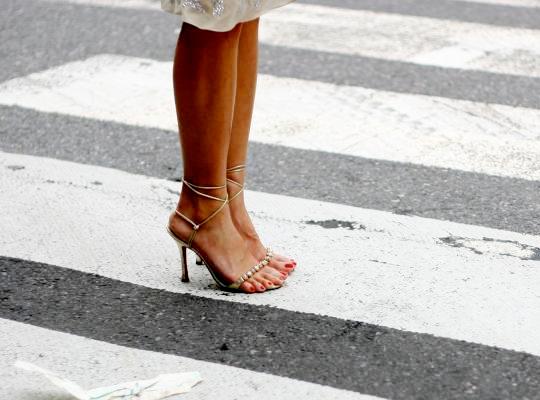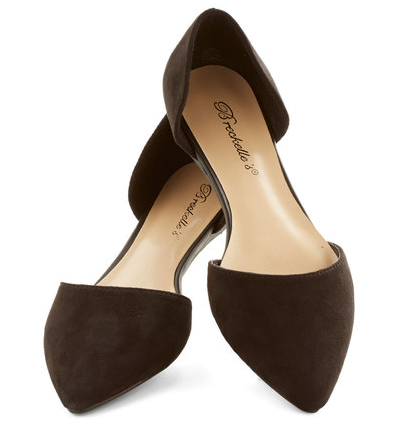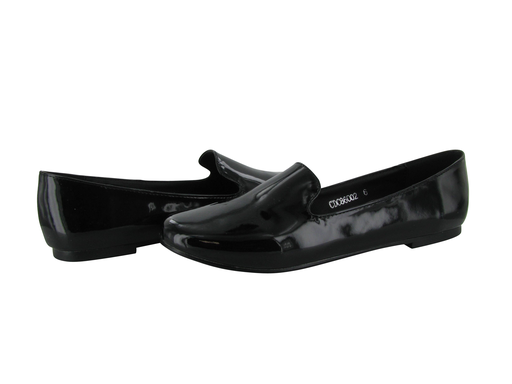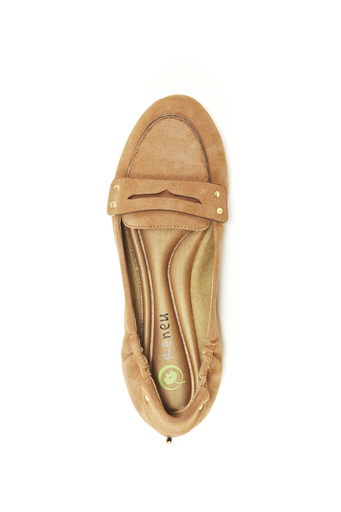If you live on the east coast, like me, you might have realized that over the past two months or so your shoe wardrobe has been refined to, well, snow boots. Even when the flakes weren’t falling, the piles of frozen slush and sheets of black ice made it treacherous to wear anything without rubber traction and insulation. Needless to say, this footwear does not demand extensive foot maintenance: no one can see what’s buried under my two pairs of woolen socks.
This made this year’s Spring Fashion Week even more disillusioning–and discouraging–than usual. How were we supposed to think about cute, strappy sandals in single-digit temperatures? But one look at the catwalks suggested there was some form of relief in sight: rather than teetering in sky-high heels, models strutted low-heeled, even flat, yet still gorgeous shoes.
What brought about this sole-friendly sea change? Low-heeled shoes have been on the rise for a while (think smoking shoes), but this spring you can look forward to even more options than your standard ballet flat. The nostalgic nod to the long-skirted fifties and grunge of the eighties has also inspired designers to revisit the kitten heel and chunky menswear penny loafers–and the infinite possibilities in between.
Besides being incredible cute and easily convertible between day and night ensembles, low and flat shoes also make for much happier and healthier feet in the long run. When finding your perfect pair, keep these things in mind:
1. A Little Lift: I remember my ballet teacher growing up prancing around the studio in Pedinis, which resembled the D’Orsay flats above more than our sole-less slippers. This is because standing or walking excessively on flat feet, without support, can result in poor alignment, inflamed tissues on the bottom of your feet, blisters, lower back and ankle pain, and fallen arches. A little lift will do the trick.
2. Alternate: Just like you switch the arm that you carry your bag on to prevent back and neck pain, switching shoes is a good (and fun!) practice. Vary your heel heights so that your feet can stretch (wearing heels too often can shorten calf muscles and tendons). Letting shoes air out between wear also prevents bacteria from building up, which can lead to other foot ailments.
3. Be Sensible: This might be the least glamorous word in shoe-speak, but a “sensible” (i.e., thicker) heel is your best option for optimal foot care. It allows for more equal weight distribution and prevents shortening of the Achilles tendon. Check out the fashionable options available this season, such as the Marais low pump pictured above.
4. Go Round: Round-toe shoes, rather than pointy or square, allow for the most breathing room for toes. I like the so-called “almond” shape, which satisfies my craving for stilettos but without the pain.
5. Get a Pedicure: Proper foot hygiene is essential for foot health, especially after dry skin and callouses build up all winter. Make sure your feet are sandal-ready with a relaxing visit to your nail salon, or if you prefer a DIY exfoliating scrub and extra-thick lotion. I like the Toe the Line scrub and Shea It Isn’t So Super Rich Foot Cream from the True Blue Spa line at Bath and Body Works ($15 each).
How will you treat your feet this spring?
Also by Jennifer: Are You in Danger of a Burnout?
__
Photo: Michael Mulvey via Flickr









